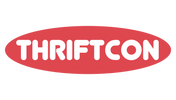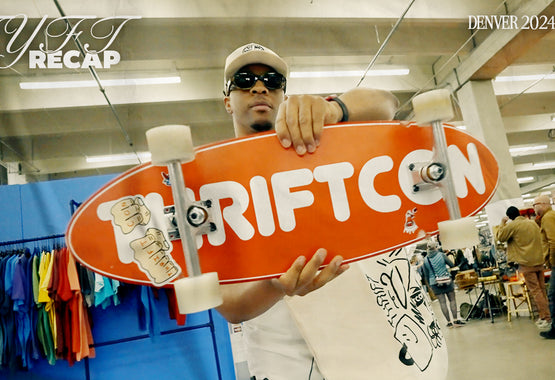Podcast: Yvon Chouinard and Patagonia


Patagonia today is not only one of the world's leaders in activewear, but they are also time and time again seen as a luminary when it comes to environmentally and socially conscious business practices. But how did they get there? The man behind the brand, Yvon Chouinard, built Patagonia into what it is today by instilling his personal values, his affinity for the outdoors, and his innate passion for attention to detail into every nook and cranny of the company.
Read more below about Yvon's younger years, the early days of Patagonia and his eventual transformation into an occupation he despised most, a businessman.
1938-1950s
Yvon Chouinard was born in Lisbon Maine, in 1938, and grew up in a French Canadian community that spoke little English. At the tender age of 10, Yvon was chosen by his father out his brothers and sisters to accompany him to work at the milk factory, as it was evident from an early age that he had the best work ethic. A year later, the family sells all of their belongings, packs up their 1944 Chevrolet and hit the road on route 66 west to California in search of a new life.
Yvon had a tough and independent childhood as a California transplant who spoke little english. He spent the majority of his time outdoors, going on adventures and exploring his new territory. At age 15, he joined what was California's first falconry club where he is introduced to climbing for the first time, which in their case was repelling down cliffs to falcon bluffs.
The next year, he traveled alone (in his 1940 Ford that he rebuilt in shop class) to climb in the Tetons in Wyoming, meeting a few climbers from Dartmouth and pretending he was climbing savvy enough so he could tag along on their adventures. It is during these climbs that Yvon is first introduced to hammers and pitons for climbing, and he is instantly hooked.
Late 50s
In 1957, just a year after Yvon graduates high school, he goes to a junkyard and purchases a 138 lb anvil, a set of tongs, a hammer, and a coal fired forge and teaches himself blacksmithing so he can make his own hammers and pitons for climbing. Yvon was a fan of writers like Thoreau and Emerson and had adopted a "leave no trace" mindset when it came to nature and climbing and was put off by the softer pitons and the fact that you left them in the rocks during a climb. He created stronger, more durable pitons that could be removed from the rocks during a climb and assist in more difficult ascents.
During these years he spent his winters blacksmithing and making climbing equipment, and the spring, summer and fall months climbing and surfing, living on fifty cents to a dollar a day, selling his pitons out of the back of his trunk to friends and climbing companions for $2 a piece.
1962
Yvon gets drafted in the fall of '62. He tries to fail the test by drinking an entire bottle of soy sauce to raise his blood pressure, but can't keep it down and ultimately passes the tests and gets deployed.
1964
After being a nuisance in the army, he somehow gets honorably discharged. Shortly after his arrival back home, he makes his way to Yosemite and joins Chuck Pratt and Co. on the 10 day first ascent of El Cap, a historic climb.
Later that year he picks back up with his climbing equipment business and releases his first 'catalog' for Chouinard Climbing Equipment, which was a one page mimeographed list of items and prices.
Mid-Late 60s
Yvon hires his first employees, moves the operation to Ventura, CA and starts to implement more sophisticated tools and processes as demand has grown to the point they can no longer continue to produce the products by hand. It is also during this period that Yvon goes into partnership with Tom and Dorene Frost. With Tom, an aeronautical engineer helping with design and aesthetics, and Dorene doing the books, Chouinard Climbing revolutionized every climbing tool on the market.
While on a trip in England, Yvon purchases a rugby shirt before a climb thinking the material would be perfect for climbing. Prior to this most climbers were either wearing buttons ups or going shirtless. He enjoys his new 'climbing shirt' so much he returns home with several. After fielding questions from all his American climbing friends about his new digs, he orders boxes of them in, starts to sell rugby shirts for climbing and can't keep them in stock. This helped start the wave for activewear in the outdoor community.
1970
Chouinard Climbing is the #1 supplier of climbing equipment in the U.S. and the pitons are their best seller.
1971
After a climb up El Cap, Yvon sees the damage done after years of use from his pitons, and starts his search for an alternative. By the time they release their '72 catalog, Yvon had phased out of pitons completely, transitioning to their new stoppers and hexcentrics. It opened with an essay about clean climbing and a word about the environmental hazards of pitons, urging climbers not to use them. Just a year earlier pitons were Chouinard's best seller, and a year later their piton business entirely was kaput.
1972
Chouinard started to add more clothing and activewear to their catalog, and added a full blown sewing operation alongside their blacksmithing operation.
1973
They are making and selling more and more clothing each year, so decide to separate the clothing brand from the climbing brand. After searching for a name, Patagonia gets tossed into the mix. It conjured up thoughts of adventure and far away places like Timbuktu. Then, after creating a logo using a skyline of Mount Fitz Roy, a peak in Patagonia, the rest is history and we still see Patagonia using this iconic label today.
1984
Pivotal year for Patagonia. They are one of the first activewear companies to begin to make undergarments with polyester and also create their iconic synchilla fleece jackets this year as well.
On the corporate side of things, Patagonia becomes the first company to offer paid maternity leave for the mother and father, a practice that would later become Federal law. They ALSO became one of the first companies with an on-site child care center and switched all of their catalogs to recycled paper.
Late 80s
In 1986, Patagonia committed to donating 10% of profits each year to small environmental groups rather than NGOs and later upped the ante to 1% of sales or 10% of pre tax profits, whichever is greater, and they have kept that commitment every year since.
Also in the late 80s Patagonia introduces their color palette: Cobalt, Teal, French Red, Mango, Seafoam and Iced Mocha. This is a big step as they are the first activewear company in the outdoors world to step away from earth tones and it ends up being a hit.
With the clothing now reaching new customers outside of the climbing world, sales boom throughout the late 80s growing from $20 million to $100 million by 1990. Patagonia gears financing and production plan for another year of 40% growth.
1991
Recession hits and disaster strikes. The growth they had planned for halted completely. Dealers canceled orders, wholesalers returned product, their credit line was reduced twice, and they end up having to make layoffs for the first time ever.
July 31, 1991, known as black Wednesday they let go 120 employees, 20% of their workforce. They reassess their values, go back to their original team and focus on their core products and customers.
1996
Patagonia becomes a founding member of the Fair Labor Association, a group of businesses and companies committed to upholding labor laws. By this time they are also already using 100% organic cotton, a move way ahead of its time.
2005
Patagonia launches the Common Thread Initiative, today known as the Worn Wear program. Another program ahead of its time, the Worn Wear allows customers to recycle and bring in old Patagonia products, either to be mended or returned for store credit towards new products. They also sell reconstructed Patagonia products from recycled pieces and host events across the country where you can upcycle, recycle, and shop their collection. All of this is an amazing forward facing effort to extend the lifecycle of their products.
2007
Patagonia starts the footprint chronicles, a website and initiative that allows customers to track the environmental impacts of Patagonia products.
2012
Patagonia becomes the first ever B Corporation. A B-Corp is a for-proft organization that at least 35 states have authorized as operating with the best interests of their employees, community, society and environment in mind.
They also launch Patagonia provisions this year with sustainably sourced salmon jerky. Patagonia provisions is their effort to do what they did for the clothing industry for the food industry. Yvon is passionate about food and wants to be a positive influence for clean healthy eating just as he is for clean climbing.
2013
Patagonia starts the $20 million and change fund, a venture capital to invest in start-ups that offer solutions to the environmental crisis
2014
Patagonia partnered with Fair Trade USA and began selling fair trade apparel with 14 certified fair trade styles. By 2017 it had expanded it's participation into more than 300 styles.
2016
Patagonia and other b-corps start a $35 million dollar fund to finance solar operations.
2018
Patagonia is officially worth $1 billion. And they did it without being morally reprehensible. That is the real moral of the story here. Patagonia is a picture perfect example of the good guys winning. They are the blueprint for growing a company in this day and age without compromising your personal values or the well being of your community.
Check out more of our podcast here, or wherever you listen to podcasts!













